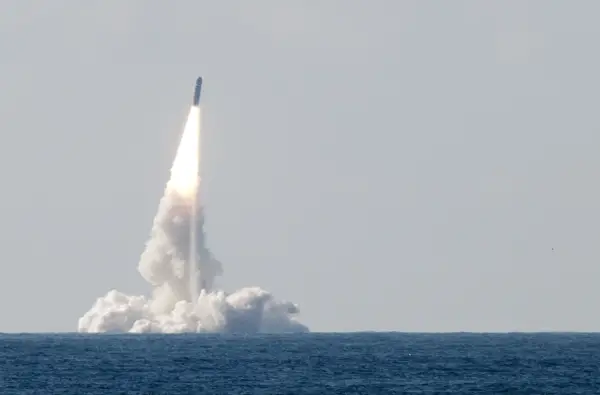French Nuclear Deterrent, Episode 1: The Key to Independence
|
|
|||
 New Generation French SLBM M51. Picture: French MoD |
|||
|
|
|||
|
Ensuring the sustainability of the nuclear deterrent
The White Paper of 2013 on defence and national security and the Military Programme Law 2014-2019 have reaffirmed the central position of the oceanic component. The White Paper defined a step towards the 2025 armed forces model with the pursuit of the modernisation of the two deterrence components and the preparation of their renewal. On the one hand, the adaptation of two of the four 2nd generation SSBNs for the use of the M51 missile and, on the other hand, the start of work to design the 3rd generation SSBN intended to replace them beyond 2030 and the development of the future version of the M51.3 missile. This work follows on from the preliminary studies of the so-called FMOD (future oceanic deterrence system). The challenge is to ensure the upkeep of the deterrence capacities, and therefore their credibility, over the period 2030-2080. |
|||
|
|
|||
 French Navy Le Triomphant-class SSBN Le Téméraire. Picture: DCNS French Navy Le Triomphant-class SSBN Le Téméraire. Picture: DCNS |
|||
|
|
|||
|
Independence and autonomy of design, production, deployment and maintenance of the deterrence capacity
The industrial sector, with DCNS as prime contractor, has an essential role in maintaining the scientific, technological and industrial potential that has for the last 5 decades allowed France to form part of the restricted circle of States possessing the capacity to design, produce and operate SSBNs. The White Paper of 2013 described this as follows: ‘‘This is a prerequisite to guaranteeing the supply security of sovereignty capacities and critical weapons systems, and their modification to suit operational needs’’. The major milestones for the equipment appropriations dedicated to deterrence In the 1960s: nuclear-related appropriations represent a little over 50% of appropriations or 0.17% of GDP (historical high point) In the 1980s-1990s: 30% 2001: 18% (low point) 2001-2015: increase to 21-23% in relation to the new M51 missile and the construction of the SSBN Le Terrible in the version M51.1 + the adaptation ROH (Source: French Ministry of Defence, 2015) |
|||
|
|
|||
|
¹Study published in October 2016 (in French)
²Discontinuation of the surface/surface component then reduction of the oceanic (downsized from 6 to 4 SSBNs) and airborne forces |
|||



























